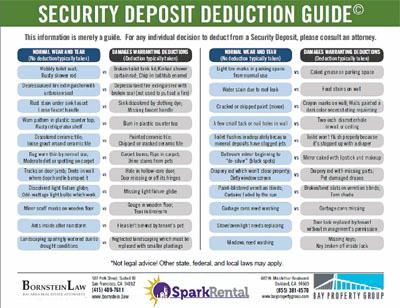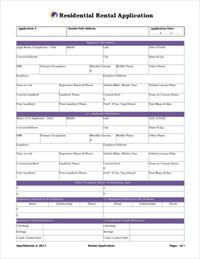FIRE Calculator
How much do you need to save, to reach financial independence and retire early?
No one says you have to work until you’re 65. Or 60, or 50, or 40, for that matter.
A few savvy souls work because they love what they do, and plan to work as long as they possibly can. But most people work for income, so they can cover their living expenses.
Still, active income – income from working – isn’t the only type of income. Real estate investors, and the wealthy, know all too well that the best income is actually passive income. Income that arrives while you’re sleeping, playing with your kids, or traveling the world.
It could come from rental properties, of course. And we talk a lot about building passive income from rentals! But it’s not the only source of passive income; others include dividends from stocks, bonds, REITs (public and private), private notes, business income, and beyond.
With enough passive income, you can cover living expenses without working. When working becomes optional, you reach a state called financial independence: you can afford to live independently from any job.
Some people retire at that point, regardless of their age. Others keep working in some capacity, whether continuing their full-time job because they love it, or volunteering for a cause they believe in, or starting a new business, working a side gig, or starting a completely new post-FIRE career doing something they love.
Welcome to the FIRE movement: financial independence, retire early!
There’s just one minor, nagging detail: how much do you need to save, in order to reach financial independence and early retirement? Use our free FIRE calculator to find out instantly.
(Note: FIRE calculator assumes annual compounding period.)
Definitions of FIRE Terms in the Calculator
Most of the fields above are self-explanatory. But a few might leave you scratching your head, if you’ve never used a financial independence/retire early calculator before. Use this quick-reference glossary whenever you get confused about a FIRE term, and don’t feel intimidated! The FIRE movement is a recent phenomenon, and the concepts are new to most people.
Total Target Monthly Income: This refers to the total amount of money you want to bring in each month from (mostly) passive sources, to consider yourself financially independent. Do not use your current monthly income here if you want to reach FIRE fast! This number should be based on your living expenses, not your current income; those should ideally be two very different numbers.
Expected Monthly Income from Rentals: How much you expect to bring in from rental properties each month post-FIRE, as a net monthly average. Remember, you need to deduct not only for regular monthly expenses like your mortgage payment, but also for irregular monthly expenses like maintenance and repairs, vacancy rate, and property management fees. If you’re new to rental investing, see this guide to calculating rental cash flow.
Expected Monthly Income from Side Gigs: Not everyone plans to continue working in some capacity after reaching financial independence, but many do. If you plan to bring in some extra money by working, after retiring early from your high-octane career, add that extra monthly income here.
Expected Monthly Income from Social Security: Depending on your age when you retire, you may also bring in Social Security income. If so, include it here.
Target Withdrawal Rate: While all of the above are pretty self-explanatory, withdrawal rates require some explanation. This is the percentage of your nest egg – your paper assets, including stocks, bonds, REITs, and funds – that you plan to withdraw each year to live on in retirement. If you’ve ever heard of the 4% Rule, then you’ve heard of withdrawal rates. The 4% Rule posits that you can withdraw 4% of your initial nest egg each year in retirement, and based on historical numbers, you can expect your paper assets to last at least 30 years with a 4% withdrawal rate. For people aiming for financial independence and retiring early, who want their nest egg to last more than 30 years, I recommend 3.5% (more on that shortly).
Retirement Horizon: The number of years between now and when you want to reach financial independence/retire early. If you want to reach FIRE within ten years, then enter “10.” Easy peasy.
Your Current Paper Assets: What you already have today. For instance, if you have $250,000, and you’re aiming for a target paper asset nest egg of $600,000, that will mean you have $350,000 to go, not the full $600,000. So enter what you have already, to help you calculate how much you need to invest every month to cover the remaining distance to your target.
Expected Return on Investment (ROI): What you believe you’ll earn on your future investments. Since 1928, the S&P 500 has returned around 10% per year on average. If you’re investing primarily in stocks, enter between 7-10%, depending on how conservative you want to be. Alternatively, you can also use this number to enter returns on real estate. Often the cash-on-cash returns from rental properties are higher than other types of investments – if you know what you’re doing! Use our free rental income calculator to run the cash-on-cash returns for any given rental property.
Choosing a Target Monthly Income for Retirement
Again, your post-FIRE income target is not the same as your current monthly income.
Instead, base it on your expected monthly living expenses. Keep in mind that those may or may not resemble your current living expenses. If you plan to live in the same house, and continue living a similar lifestyle, then you can use your current living expenses here.
But don’t fall into the trap of assuming your post-FIRE life will look exactly like your current one. You could move abroad, or to another state or city. If you quit your job, you won’t need to spend money on work clothes or on your daily commute anymore. Your lifestyle might look considerably different.
Plan out your post-financial independence or post-retirement lifestyle carefully, to get a good sense of exactly how much income you’ll need each month. And remember: the less you plan to spend, the less you need to save, and the faster you can reach financial independence! Toy around with the numbers in the FIRE calculator above to see just how much of a difference even $100/month in income has on your target nest egg.
As a final thought, keep in mind you can get creative with slimming your expenses, both now and in retirement. The classic example? Reduce or eliminate your housing payment by house hacking. Check out our free house hacking calculator to run the numbers on any given house hacking scenario.
FIRE Income: Plan for Many Sources
Too many people pursuing FIRE focus only on the nest egg of paper assets that they need. Don’t make that mistake.
In addition to stocks, bonds, and other paper assets, brainstorm as many sources of income as you can. Obviously we focus heavily on rental income here at SparkRental, which can provide an excellent source of revenue in retirement. It also complements income from stocks well, given real estate’s lower volatility but lower liquidity, and how real estate markets move independently from the stock market. More on real estate vs. stocks here.
But additional retirement income doesn’t end with rental properties. Maybe you flip houses for fun in retirement? Do some freelance writing? Tutor children like my mother does? Pour wines at a local winery, or some other fun, laid back job?
One of the enormous advantages to retiring young is that you don’t have to rely 100% on your nest egg and investments for income. You can work as much or as little as you want, and bring in as much or as little extra money as you need.
That also makes you less susceptible to sequence risk, which means you don’t necessarily have to shift your asset allocation away from stocks and toward bonds.
Unconventional Advice: Forgo Bonds When You Retire Young
In the old model of retirement, when people turned 65, had a Friday office party with cake, then walked out the door forever, they needed bonds for safety and security. The stock market might crash right after they retired (better known as sequence risk), and their entire nest egg were in stocks, they’d be in trouble.
But if you retire at 40, with diverse income streaming in from rental properties, stocks, and a side gig or two, you don’t face the same sequence risk. Sure, the stock market might crash early in your “retirement” – but you’re not really retired, are you?
For starters, you can always just pick up a little more work from your fun retirement gig work. If you work two days each week at the local winery, maybe you pick up an extra day or two. Or maybe you start doing a little consulting on the side, or freelance work, or flip a house or two, or whatever you love doing that can bring in some extra cash while the stock market corrects itself and starts rising again.
Another option: you can always lean more heavily on your rental income. Perhaps you defer some maintenance on a rental property until next year (when the stock market has hopefully recovered), or perhaps you convince a wavering tenant to renew their lease agreement for another year by offering not to raise the rent.
Because the simple fact is that bond yields in this century have been terrible. At the time of this writing, the 10-Year Treasury rate is an abysmal 1.74%. You would literally lose money by investing in Treasury bonds, since inflation has risen faster than that over the last year.
It’s one of the great perks of pursuing financial independence/early retirement at a young age: you can leave most or even all your paper investments in stocks. And, of course, bend the old rules with rental income.
What Withdrawal Rate Should I Plan For?
The short answer: if you retire young, and want your nest egg to last indefinitely, then plan on a 3.5% withdrawal rate. If you retire at the normal age of 65, then you can consider the standard 4% Rule. A 4% withdrawal rate historically leaves your nest egg intact for at least 30 years, but may not last longer than that.
Now for the long answer. Financial experts look at historical stock and bond returns to determine how much a retiree can withdraw from their accounts in retirement, as a percentage of their total nest egg. The classic 4% Rule stated that if you withdraw 4% of your nest egg in the first year of retirement, and raised your withdrawal each year only enough to account for inflation, then your nest egg should last at least 30 years.
For example, if you retire with a million dollars in paper assets (stocks and bonds), you can withdraw $40,000 to live on, in the first year of retirement. After that, you can raise that amount to cover inflation, but no more.
If you only need your nest egg to last 20 years, rather than 30, you can safely withdraw 5%.
And if you want your nest egg to last forever, you should only withdraw 3.5%
Why 3.5%? Because Certified Financial Planner Michael Kitces has mathematically demonstrated that with a 3.5% withdrawal rate, your portfolio of stocks and bonds will never run out of money.
At least, not based on historical returns. An alien invasion could destroy the global financial system, and then you’d be screwed.
In personally plan on a 3.5% withdrawal rate when I run my own numbers in the FI calculator.
(article continues below)
Where Do Rentals Fit in the FI Calculations?
Rental properties often offer higher cash-on-cash returns than paper assets. That means it takes less cash on your part, to create the same amount of income.
There are a few reasons for that. On a fundamental level, real estate investing comes with several barriers to entry, preventing the average Joe Schmo from competing with you. Investing in rental properties requires a degree of knowledge, and some work to find good deals on investment properties.
It also takes capital – lots of capital. Unless you buy the cheapest real estate in the US, you’re looking at a $50,000 down payment to put down 20% on a median home. And that’s if you use a rental property loan, rather than buying in cash.
Which raises another reason why rental properties often come with better cash-on-cash returns: leverage. You can use other people’s money to build your own portfolio of assets, and if you use strategies like the BRRRR method, you can even buy rental properties with no money down (at least after refinancing them).
Experienced real estate investors routinely see cash-on-cash returns in the 10-20% range. Given that you can accurately predict real estate cash flow, and don’t need to worry about sequence risk with rentals, that makes them powerful allies in the quest for FIRE.
FI vs. FIRE: What’s the Difference? Do I Have to Retire?
I use the two acronyms, FI (financial independence) and FIRE (financial independence, retire early) interchangeably. They refer to the same goal: the ability to cover your living expenses with passive income from investments.
Whether you actually retire or not, upon reaching FI, is immaterial. You may decide to keep on working indefinitely. Or you might buy a houseboat and sail the rivers of Europe for the rest of your days.
Don’t get hung up on your exact retirement date. Focus on becoming financially independent, and from there you can choose to do whatever you like.
Final Thoughts
When you aim to retire early, you make a tradeoff. You sacrifice the power of compounding across many decades, and make up the difference with a higher savings rate.
Imagine you want to reach a million dollars in your nest egg. If you have 40 years, earning an 8% return, it only takes $287/month in savings to reach $1,000,000. If you want to reach a million dollars in ten years, it takes $5,467/month in savings.
That’s more than 19 times the monthly savings, in order to reach your goal four times faster.
As you play with the FIRE calculator above, try different rates of return, different income targets, different retirement horizon timelines. It is absolutely, 100% possible to reach financial independence in ten years. But it takes an exceptionally high savings rate to do it.
Embrace a frugal lifestyle, and you’ll be amazed at how quickly you can reach FIRE – and then do whatever you want with the rest of your life.
What’s your retirement horizon? What role do rental properties play in your financial independence plan? Most of all, what can we at SparkRental do to help you get there? Let us know below!
More Outside-the-Box Reads for Free Thinkers:
What Else Do You Want Help With as a Real Estate Investor?
FAQs About the Free FIRE Calculator
Why can't I edit the amount of income I need from paper assets?
Because it’s calculated for you! It’s an output field in the FIRE calculator, the remaining income not already accounted for by your real estate income, Social Security benefits, and post-retirement gigs.
What if I have other sources of income not listed among the calculator fields?
Add it wherever you like! For example, if you earn money from both rental properties and real estate syndications, you can lump it together real estate income.
Why do you recommend a 3.5% withdrawal rate for early retirees?
Because that withdrawal rate should let your paper assets keep growing forever, based on an analysis of historical returns by CFP Michael Kitces. If you only need your nest egg of paper assets to last you 30 years, use a 4% withdrawal rate. For it to last 20 years, you can withdraw even more. See our article on safe withdrawal rates in retirement.
What asset allocation do you recommend?
We’re not investment advisors, certified financial planners, or fortune tellers. You have to decide that for yourself, based on your comfort with real estate versus stocks versus bonds and alternative investments. Brian aims for 50-60% of his investments in stocks, 40-50% in real estate, and almost nothing in bonds, because he uses real estate to fill the same role as bonds in his portfolio. But you invest in any way that lets you sleep at night.
How can I reach financial independence and retire faster?
You can reach financial independence faster in two ways: increase the amount of money you invest each month, or earn higher returns on your investments (preferably both). The more you learn about real estate investing, the higher the returns you can expect to earn.
For that matter, it also helps to plan on side gig income after you retire. I know you think you want to sit on a beach for the rest of your life sipping mai-tais, but you don’t really. You’d get bored after a week or two. So plan on a post-retirement gig or job or business venture, that brings you joy and meaning and some extra dough.
What's the average historical return on the stock market?
Since 1926, the average stock market return on the S&P 500 is around 10.5% per year. It’s a little lower for stocks elsewhere in the world, typically in the 7-8% range. Those average returns include dividend yield.


















